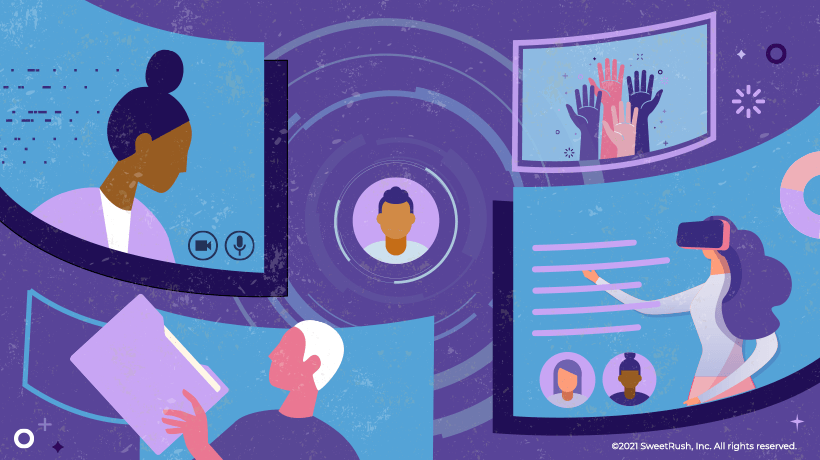What Opportunities Does The Great Reimagination Of The Workplace Bring?
The job market has undergone significant changes in the past few years, largely triggered by the COVID-19 pandemic. We use various names to describe these changes and their impacts, such as "quiet quitting," "the Great Reshuffle," and "career cushioning." The most notable shifts we are currently experiencing are the result of the Great Resignation. As people faced an unprecedented crisis, they reassessed their priorities and began seeking a better work-life balance. Now, a few years later, with the immediate danger of the pandemic having subsided and the dust settling, we understand that it has had a lasting impact, leading to a reinvention of the modern workplace. In this article, we discuss this phenomenon, known as the Great Reimagination, the ways it is affecting the workplace, and how leaders can adapt to it.
The Great Resignation: A Crisis Or An Opportunity For Change?
The Great Resignation affected the job market in many ways, some positive and some negative. It created talent shortages and left businesses struggling to fill essential positions, but it also highlighted a new world where work-life balance and supportive work environments were possible. Ultimately, the Great Resignation served as a wake-up call for employees and employers alike. The former realized that their work couldn't consume their lives and began to advocate for better work conditions. Meanwhile, employers recognized the necessity of prioritizing their employees' well-being to foster loyalty and maximize performance. All in all, we can say that the Great Resignation paved the way for the Great Reimagination of the workplace, presenting an opportunity for meaningful change and growth.
What Is The Effect Of The Great Reimagination?
We are now experiencing a new phase of the modern workplace. This reinvention has led to changes such as the following.
Flexible Work Models Are Becoming The Standard
At the beginning stages of the Great Resignation, working from home was reserved for a very small percentage of the workforce. Now, not only are employers realizing that remote work can be implemented for many more employees and tasks than they previously thought possible, but it also boosts productivity and employee satisfaction. It has also promoted a more meaningful and trusting relationship between employees and their employers, as work is evaluated based on outcomes rather than oversight.
Rise Of The Passion Economy
In their search for more fulfilling jobs, millions of people started thinking outside the box regarding their employment options. Combined with all the extra free time they had during lockdowns, many discovered that their hobbies can do more than help them pass the time: they can also be a source of income. The passion economy is now bigger than ever, allowing people to make ends meet by launching their own small businesses or creating content for platforms such as YouTube, Patreon, and TikTok.
Employee-Centered Leadership
The major change that the Great Reimagination has brought to the workplace is mainly realized through leadership. As the expectations and requirements of employees regarding their jobs changes, leaders must keep up and adjust the way they run their businesses and teams. The leader of the reimagined workplace is transparent, empathetic, and inspiring. They try to understand the needs of their employees, maintain open communication, achieve alignment in values and goals, and foster a supportive and inclusive work environment.
More Agility In The Workplace
The events of the last few years have shown us that things are not as stable as we might have thought. Businesses are constantly facing new challenges that demand rapid response times. In the era of the Great Reimagination, leaders and employees are better equipped to do that thanks to a renewed commitment to continuous learning, development, and improvement. They focus on fostering a culture of innovation that encourages teams to work on their skills constantly, suggest ways to optimize processes, and proactively address issues before they arise.
How Can Business Leaders Support This Transition?
1. Foster A Culture Of Communication
This is a new time for everyone. Employees are exploring what they want their professional lives to look like, while employers are trying to balance these desires with the needs and overall success of their businesses. The only way to emerge from this situation unscathed is to implement an open-door policy that encourages employees to speak their minds either through anonymous surveys or open discussions. This way, business leaders can reshape their company's culture in a collaborative way, maintaining efficiency and productivity while also promoting high levels of employee engagement and satisfaction.
2. Focusing On Output Instead Of Outcome
The Great Reimagination has transformed how employees show up for their businesses. Before, leaders and managers assessed their workforce's performance based on factors like physical presence, number of work hours, achievement of rigid goals, etc. Seeing as the modern employee has a more flexible work schedule, this is no longer possible or effective. Leadership now focuses on the impact and outcomes employees deliver, regardless of how many hours they worked or where they were while completing a project. This shift reflects a more meaningful approach towards productivity and fosters trust in an employee's ability to self-manage and produce results without someone looking over their shoulder.
3. Developing Their Internal Talent
Modern employees value their development and actively seek opportunities to gain new skills and expand their knowledge base. This might come as a response to volatile conditions in the business landscape or due to a personal drive for improvement. Regardless of the reason, it is essential that business leaders meet this need by providing a range of development and career advancement opportunities. Recognizing and promoting your existing talent instead of searching externally whenever a new position opens up fosters loyalty within the organization, leading to a workforce that feels valued and less inclined to search for alternative job opportunities.
4. Embracing Change
Business leaders must be prepared to handle change as they navigate the era of the Great Reimagination. Changes in employee expectations, emerging technologies, and evolving strategies will inevitably arise, and leaders need to be able to adapt quickly. Future-ready business leaders embrace change by experimenting with company culture, reimagining organizational structures, as well as focusing on Learning and Development initiatives. This way, they create an agile workforce that is equipped with the creative, problem-solving, and innovative skills necessary to handle anything that comes their way.
Conclusion
The Great Reimagination of the workplace is not a buzz term that carries no meaning. It is a reality that is actively changing employee expectations, leadership styles, and corporate culture. The impact of the events of the past few years is all too real, urging employees to search for meaning in their work and a healthy work-life balance. In order to remain afloat during this transitional era, business leaders need to keep an open mind toward their employees and work together to create an optimized work environment that promotes profitability while respecting employees' boundaries.









![COVID And The Great Resignation: Reimagining The Frontline Workplace And How Employers Can Compete [eBook]](https://cdn.elearningindustry.com/wp-content/uploads/2022/04/shutterstock_207086488.jpg)